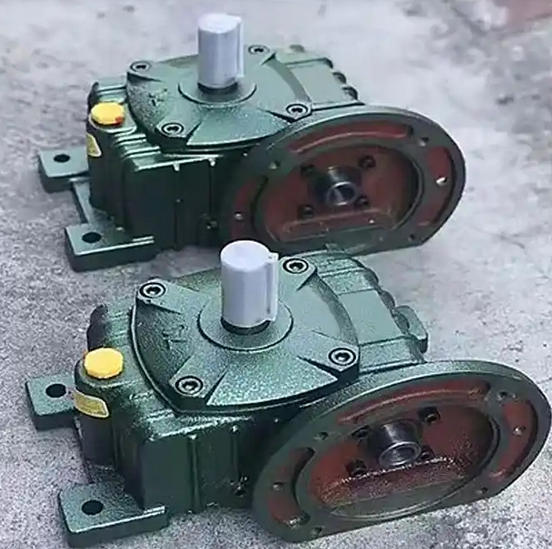Common faults and solutions of WPDO100-60-A worm gear reducer
The WPDO100-60-A worm gear reducer (with a center distance of 100mm and a transmission ratio of 60:1, where "A" is a specific installation configuration) is a commonly used small and medium-sized reduction equipment in industry. Due to the meshing characteristics and structural features of the worm gear, common faults are concentrated in areas such as decreased transmission efficiency, abnormal noise and vibration, oil leakage, and overheating. It needs to be addressed in a targeted manner based on its characteristics of "mainly sliding friction and strong self-locking", as follows:
1、 Worm gear wear/poor meshing (most common fault)
Fault manifestation:
The output torque decreases and the load cannot be driven (the transmission efficiency drops from normal 70% -80% to below 50%);
Continuous friction sound or irregular stuttering sound occurs during operation;
The worm gear tooth surface has "pitting, bonding, and uniform wear of tooth thickness", and the worm thread surface has scratches.
Core reason:
Wrong lubricating oil model (not using special oil for worm gear, such as misuse of gear oil, lack of anti adhesive additives);
Long term overload operation (exceeding the rated torque by more than 1.2 times, resulting in excessive contact stress on the tooth surface);
Deviation in center distance during installation or non perpendicularity of the worm gear axis (excessive or insufficient meshing clearance);
Defects in worm gear material (tin bronze material with many impurities and poor wear resistance).
resolvent:
Mild wear and tear:
Replace the special oil for worm gear and worm gear (recommended 320 # or 460 # extreme pressure worm gear and worm gear oil, containing anti friction additives);
Adjust the load to the rated range (WPDO100 rated output torque is about 500-800N · m, please refer to the manual for details);
Check and adjust installation accuracy: Use a dial gauge to measure the deviation of the center distance of the worm gear (should be ≤ 0.1mm), ensuring that the perpendicularity error of the two axes is ≤ 0.02mm/m.
Severe wear (tooth surface peeling, tooth thickness reduction of more than 10%):
Replace the worm gear (prioritize ZCuSn10P1 tin bronze material, with better wear resistance than ordinary bronze) and worm gear (45 # steel quenched and tempered, surface quenched HRC45-50);
After the assembly of the new part, it needs to run for 2 hours without load (with a small amount of lubricating oil added), and then run with load to avoid initial overload.
2、 Gearbox overheating (operating temperature exceeding 80 ℃)
Fault manifestation:
The surface temperature of the box is too high (when the normal operating temperature is ≤ 70 ℃ and the ambient temperature is 25 ℃);
Lubricating oil turns black and has a burnt smell (due to high-temperature oxidation deterioration);
In severe cases, the worm gear and worm may become stuck due to overheating (sudden shutdown).

Core reason:
Insufficient lubricating oil or deteriorated oil quality (unable to form an effective oil film, increased frictional heat generation);
Poor ventilation in the environment (such as installation in a closed cabinet, which hinders heat dissipation);

